You can trust Cyclingnews

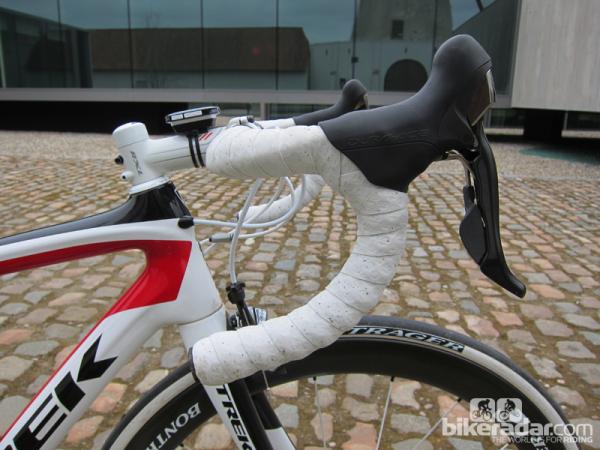
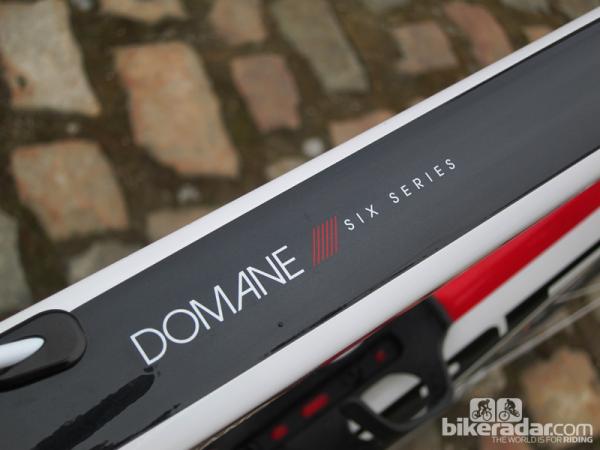
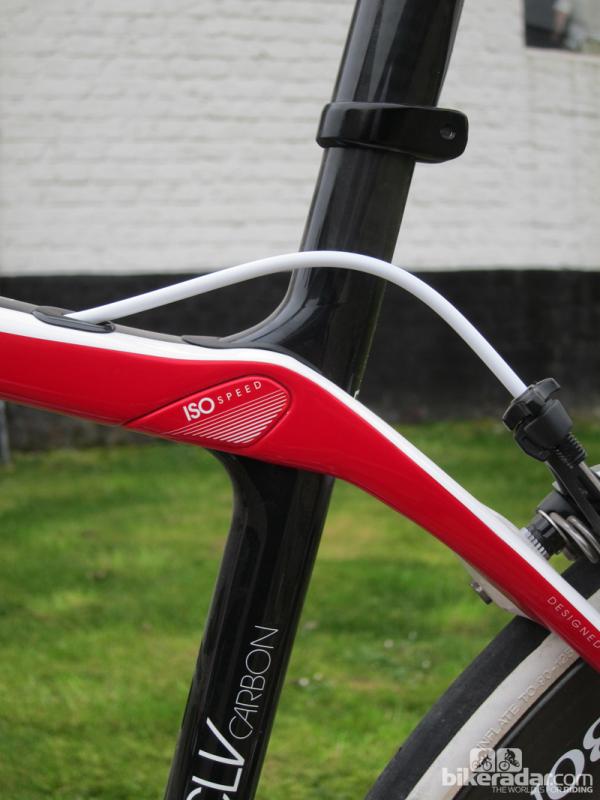
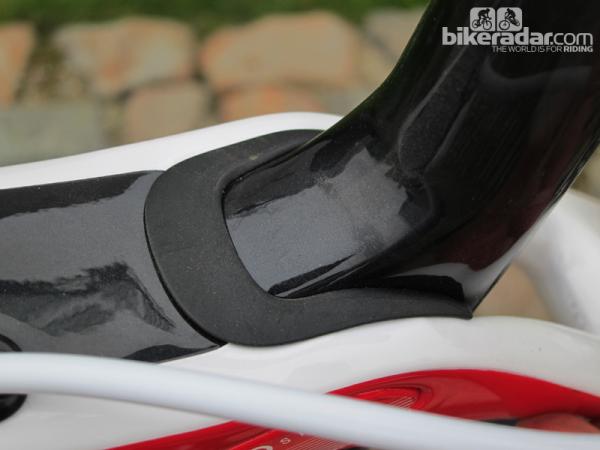
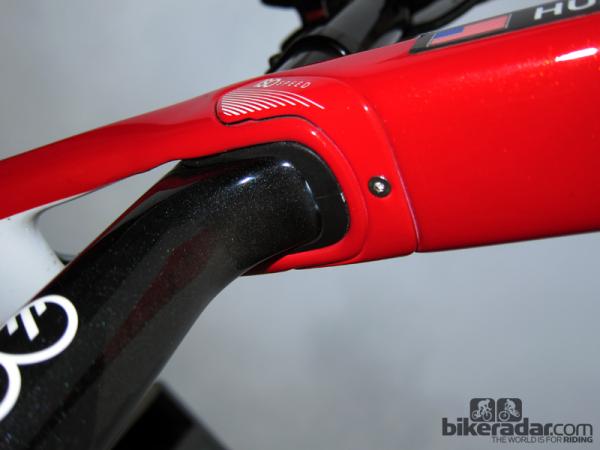
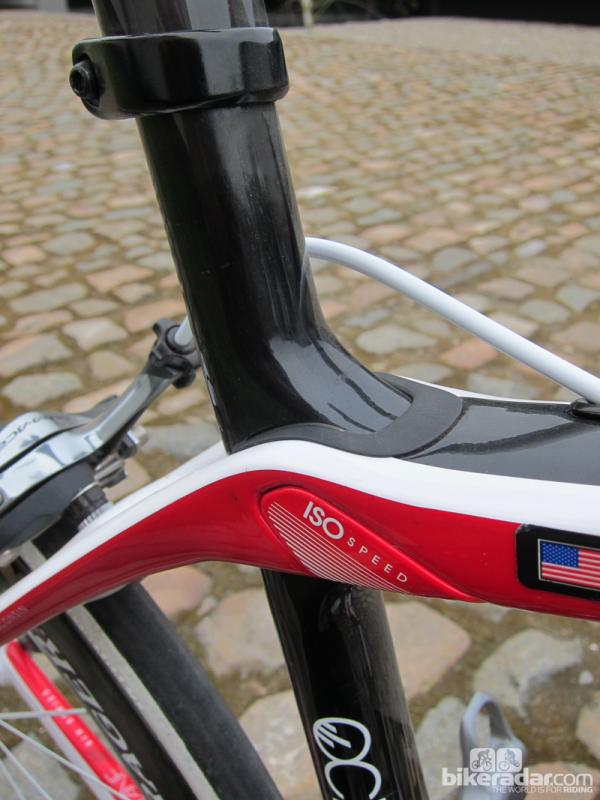
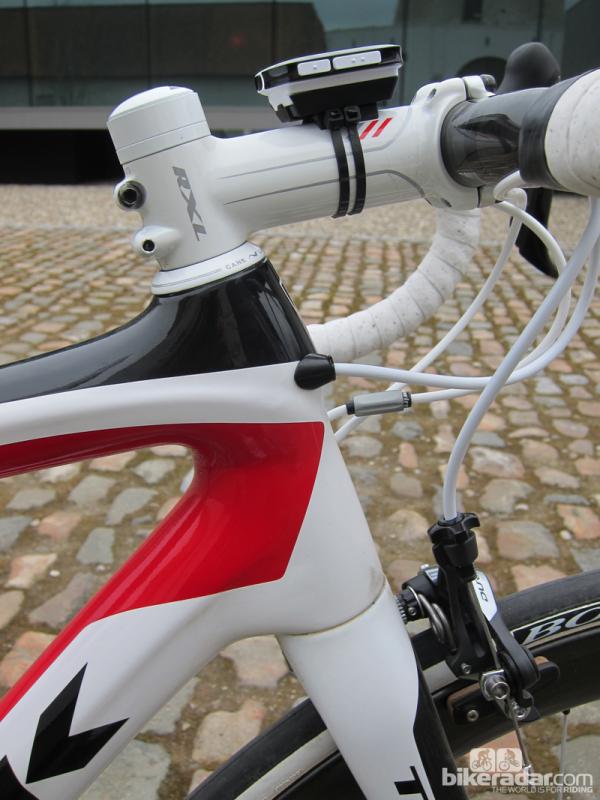
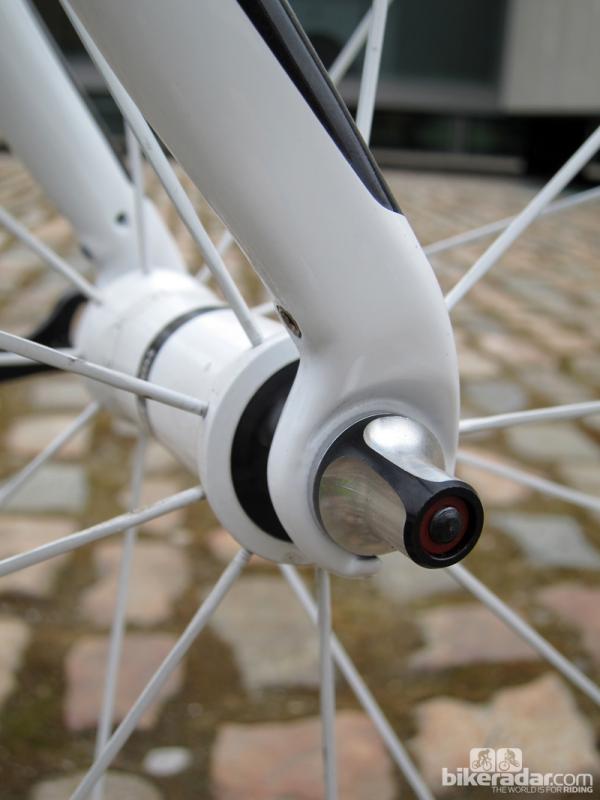
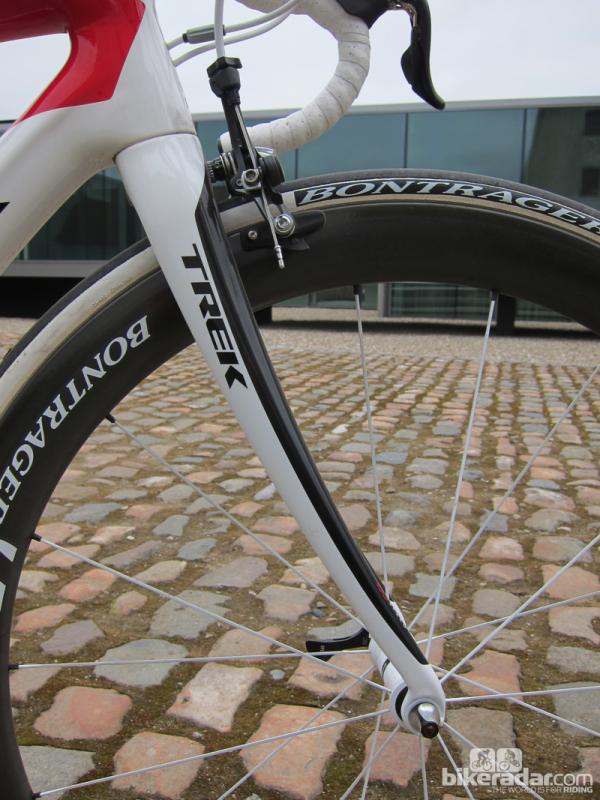
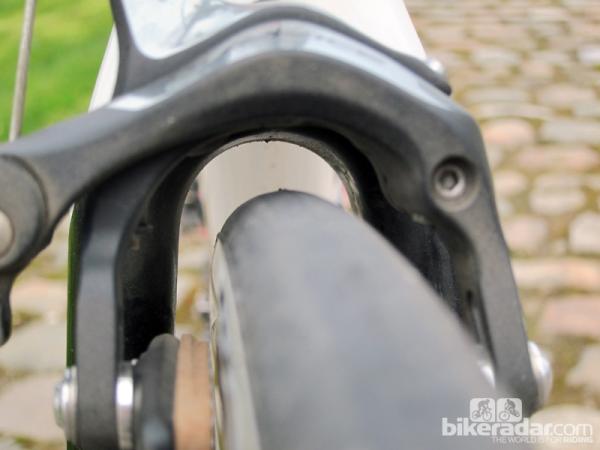
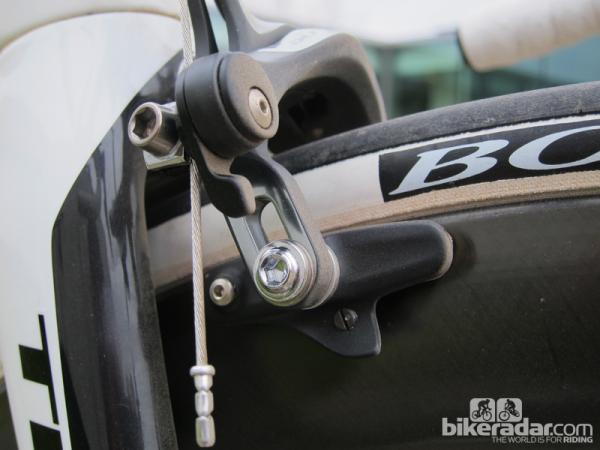
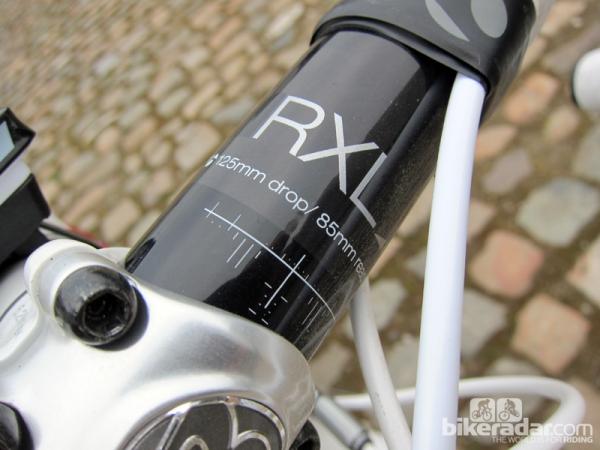
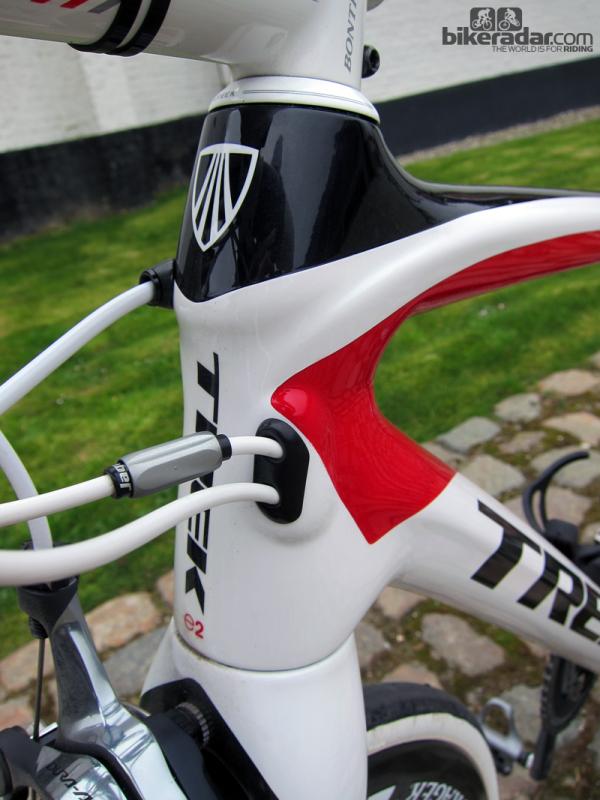
This story originally appeared on Bikeradar
The IsoSpeed "decoupler" on Trek's new Domane classics bike breaks new ground in its approach to smoothing out the ride over rough roads. Skeptics dismiss it as being akin to a flexible seatpost (or even a suspension post) integrated into a more expensive and overly complicated frame but after a four-hour ride* including several of Ronde van Vlaanderen's fabled cobbled climbs, we can emphatically say that it's not what you think – it's probably better.
IsoSpeed is no gimmick
First things first: the IsoSpeed seat cluster on the Domane really works. In fact, it works far better than we anticipated and doesn't feel like we imagined it would. Belgian cobbles are genuinely less violent on your rear end by a substantial amount – sort of like switching from 60tpi tires to 220tpi ones, times 10 – and reasonably high-quality road surfaces turn to glass. It's the closest thing we've ridden to a properly suspended road frame in terms of small-amplitude impact absorption, and IsoSpeed's ability to, well, isolate your rear end from road harshness is so effective that at times, it's almost eerie.
The movement is essentially what frame designers try to work into their bikes already but in a greatly amplified fashion – you don't just feel the flex (in a good way) in the saddle, you can see it, too. Whereas those other bikes are essentially a cantilevered spring from the seat cluster up, the spring length of the Domane is the entire seat tube. With two bottles mounted, you can actually see them moving towards each one on a big hit as the seat tube adopts a slight 'J' shape under load.
That being said, the motion – which is undamped aside from whatever is built into the seat tube itself – never seems excessive, at least not for this tester's 72kg weight. The movement is very controlled, surprisingly lacking in bounciness and essentially invisible except for the fact that things that would normally jolt you are tamed down. There is, however, an extremely slight rhythmic fore-aft motion that we noticed on other riders' test bikes but it's so slight that we never noticed it ourselves and none of the other journalists on site made mention of it.
The IsoSpeed "decoupler" on Trek's new Domane classics bike breaks new ground in its approach to smoothing out the ride over rough roads. Skeptics dismiss it as being akin to a flexible seatpost (or even a suspension post) integrated into a more expensive and overly complicated frame but after a four-hour ride* including several of Ronde van Vlaanderen's fabled cobbled climbs, we can emphatically say that it's not what you think – it's probably better.
IsoSpeed is no gimmick
First things first: the IsoSpeed seat cluster on the Domane really works. In fact, it works far better than we anticipated and doesn't feel like we imagined it would. Belgian cobbles are genuinely less violent on your rear end by a substantial amount – sort of like switching from 60tpi tires to 220tpi ones, times 10 – and reasonably high-quality road surfaces turn to glass. It's the closest thing we've ridden to a properly suspended road frame in terms of small-amplitude impact absorption, and IsoSpeed's ability to, well, isolate your rear end from road harshness is so effective that at times, it's almost eerie.
The movement is essentially what frame designers try to work into their bikes already but in a greatly amplified fashion – you don't just feel the flex (in a good way) in the saddle, you can see it, too. Whereas those other bikes are essentially a cantilevered spring from the seat cluster up, the spring length of the Domane is the entire seat tube. With two bottles mounted, you can actually see them moving towards each one on a big hit as the seat tube adopts a slight 'J' shape under load.
That being said, the motion – which is undamped aside from whatever is built into the seat tube itself – never seems excessive, at least not for this tester's 72kg weight. The movement is very controlled, surprisingly lacking in bounciness and essentially invisible except for the fact that things that would normally jolt you are tamed down. There is, however, an extremely slight rhythmic fore-aft motion that we noticed on other riders' test bikes but it's so slight that we never noticed it ourselves and none of the other journalists on site made mention of it.
Despite the motion of the seatmast cap being both up-and-down and fore-and-aft, any change in cockpit length was so brief as to be virtually imperceptible. If you're the type of rider who cherishes an intimate connection with the road surface through every contact point, though, the Domane will disappoint you. IsoSpeed isolates you so completely from the pavement that in most situations you barely feel anything at all through the saddle.
The Domane feels like a regular, well designed, 'normal' bike in every other respect. It pedals at least as efficiently as a current Madone (Trek claim even more so, in fact), the front triangle stiffness and steering precision feels inline with other manufacturers' flagship carbon race bikes (again, the Domane fork is supposedly stiffer side-to-side than a Madone's) and it's very light, with the IsoSpeed bits comprising just 50g of the claimed 1,050g 56cm frame weight. Our 52cm test bike was just 7.01kg (15.45lb), as pictured but without pedals – not bad at all for something so comfortable.
IsoSpeed is awesome but it doesn't extend tip-to-tail
Trek's work on the front end – with the fork's radically raked geometry, aggressively tapered blades and rear-facing dropouts, and the IsoZone cushioning in the handlebar – is readily apparent, too, but the improvement here over a regular Madone isn't nearly as dramatic. Even Trek claim just a modest seven percent bump in fork comfort as compared to nearly 50 percent out back.
Therefore, hitting the cobbles at speed still rattles your hands – just perhaps slightly less so. Road texture that we couldn't feel at all through the saddle was still transmitted up through our hands. It wasn't a particularly offensive sensation – realistically, the Domane front end ranks very highly in terms of comfort – but all the same, it's a slightly disjointed feel front-to-back that some might find off-putting. On the positive side, the aforementioned riders who might bemoan the near-total lack of road feel will find it here.
Even more apparent is the Domane's lower frame (down tube/bottom bracket/chainstays) stiffness. This keeps the drivetrain very efficient but also sends bigger impacts straight into the bottom of your feet. As BikeRadar's US editor, Matt Pacocha, says, racing on cobbles is like "someone pounding on the bottoms of your feet with sledgehammers". In fairness, we didn't notice the issue on more typical road surfaces and many riders may never subject themselves (or the Domane) to that sort of torture test, anyway.
Fit & handling: Not as tall as we initially thought, ultra-stable geometry
Trek road product manager (and former team liaison) Ben Coates touts the Domane's new Endurance Geometry as offering "all of the stability that you're looking for paired with all of the raciness that you've come to love". Trek have certainly nailed the stability half of that equation on the Domane. Relative to the Madone, the chainstays are roughly 1cm longer, there's a full centimeter of additional bottom bracket drop on some sizes (the Madone was already among the lowest among major manufacturers' stage racing bikes), the head tube angle is 1-2° slacker and the wheelbase is about 2cm longer.
As a result, the Domane is incredibly stable, particularly on very rough and slippery sections of road that would normally conspire to ricochet the front and rear wheels in different directions. Sitting up to strip off layers is child's play and even riding no-handed in crosswinds is seemingly less dramatic – with 50mm-deep wheels fitted to our test bike, no less.
However, Trek contend that the increased fork rake (48-53mm, depending on size) still maintains "the handling of a race bike". Indeed, the greater rake does offset the increase in trail relative to a Madone nearly completely (varying by just 0.1-0.4cm depending on size) so the bars feel hardly heavier in your hands when initiating a turn. However, it's impossible to completely mask the longer rear end and wheelbase.
The Domane obediently followed the directed path on just about every road surface we threw at it but some riders might actually find it to be a bit too stable. It still rails corners well once you set an arc but it's not quite as easy to alter your line in mid-stream, so crit racers looking for additional cush should look elsewhere. That being said, we've long found we can corner faster on slightly softer bikes on account of the additional traction and we'd bet IsoSpeed will only enhance that, especially with deteriorating road conditions.
Fit-wise, the Domane is taller up front than an average Madone but not by a huge amount as compared to the H2 variant. Head tube lengths increase by 5mm (as on our test bike) to 15mm (on the largest sizes), putting the Domane roughly in between the H2 and H3 fits in terms of bar height. Provided you don't run a particularly aggressive position, most riders should be fine with the stem slammed and a short headset cone fitted.
Is the Domane for me, or should I go with a Madone?
The Domane vs Madone discussion essentially revolves around three things: ride quality, fit and handling. Shopping for a Trek and looking for a faster handling machine, a more aggressive position and a firmer ride? Easy – go Madone. Otherwise, the Domane's superior comfort, more sedate handling and more accommodating position is better suited to how most road riders actually spend their time. That the Domane is otherwise so impressively efficient and lightweight blurs the lines further but ask yourself what you're really going to be doing out there and we suspect the answer will be a little clearer.
* As we've only ridden the Domane for four hours and our test bike had a custom spec, we're going to hold off giving it a score at this stage. Look out for a full review on BikeRadar once we've put some miles on a production model.